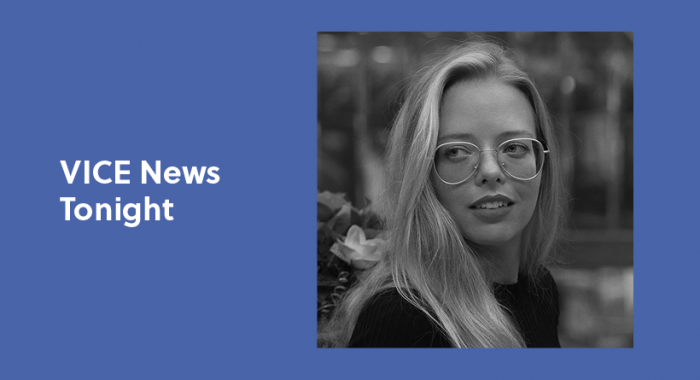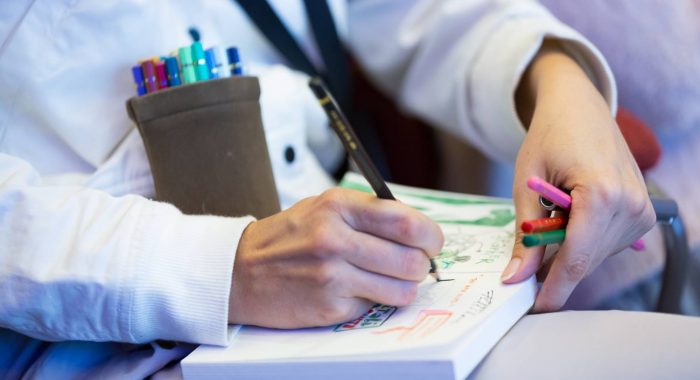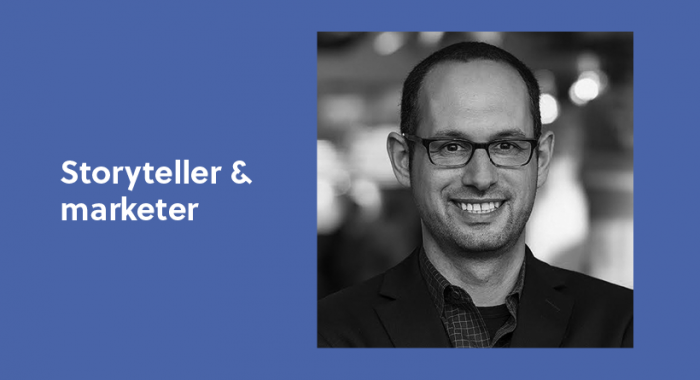If you want to change the world, start with your own story. Stay humble, it makes you smarter. If you want to recreate history, look for answers in individual stories, not official narratives. Only by trying and failing many times can an outstanding story emerge. These were some of the insights that tied together the second day of #Story18. Scroll down to read how the day went.
Read the main insights from Day 1 here.
MURRAY NOSSEL
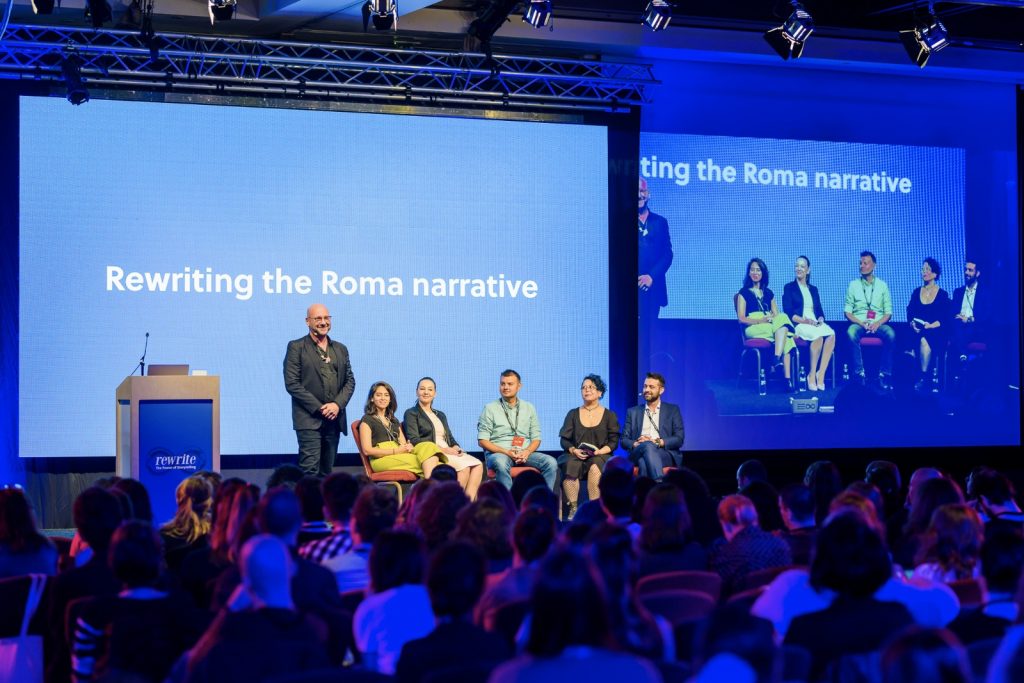
Murray kicked off day two of the conference with a touching story about how his work with HIV positive patients changed the course of his life and helped him meet his great love (and husband), David. “The change you want to see in the world begins with your own story. But I was thinking it should be longer: the change you want to see in your life begins with your own story and the someones who are willing to listen to it. Without anybody’s listening, your story has no air to breathe in,” Murray explained.
After this, Murray invited five members of the Roma community from Romania and Macedonia to share their stories about being a Roma, facing discrimination, and how this shaped who they are today. Together, they set out to rewrite the Roma narrative.
MILA TURAJLIC
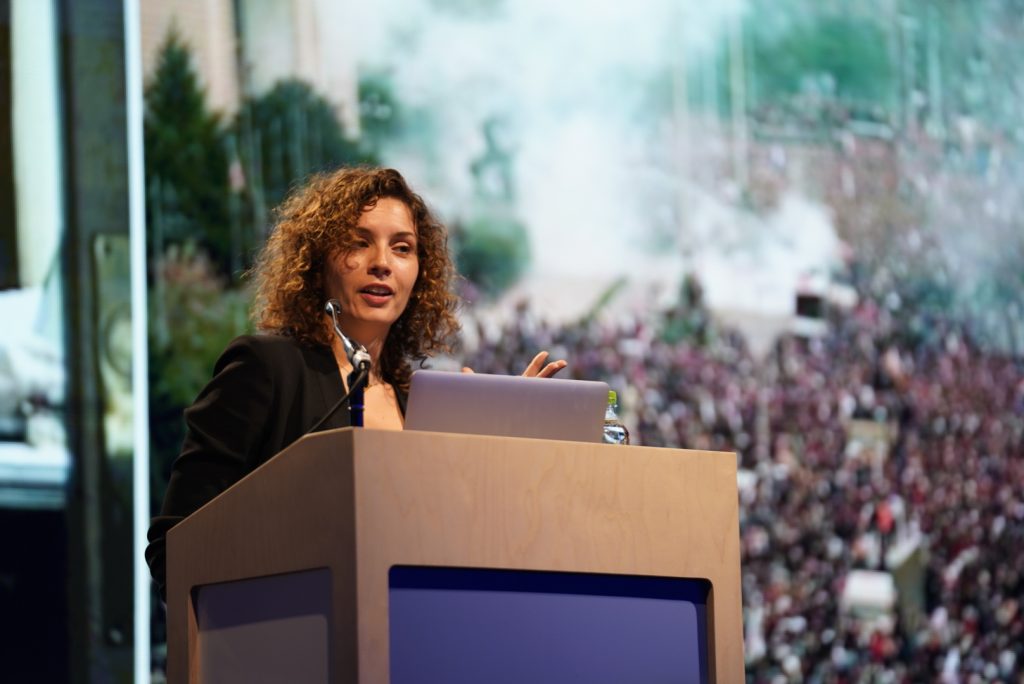
Serbian documentary filmmaker Mila Turajlić talked about her attempt to rewrite pieces of the missing history of her country through personal documentary filmmaking.
- The military museum in Belgrade, the oldest museum in Serbia, tells you something about my country’s history: the second floor, dedicated to the Second World War, is not open to the public because the government said the story of the Second World War needs to be retold, because it’s too much of a communist perspective. They don’t know how to tell it, so they keep it closed.
- As a society, because we are so divided, we are unable to tell our story, about events that happened 70 or 10 years ago. When don’t know how to tell the story, we just make it disappear, and this is what’s happening with our national archives as the film studio that was built to tell our story has been abandoned. In my first documentary, Cinema Komunisto, I used the disappearing studio as a metaphor story, as an image of our national life.
- Somewhere in this inability to narrate ourselves, I became a filmmaker. (…) I decided to try and tell the personal story instead, the intimate truth. In my second documentary, The Other Side of Everything, I tried to confess that I lost my political faith. I lost my faith in history also, but I found a faith in storytelling now.
- I grew up in a house that was like a political salon. My mother always had friends over and they would argue because they didn’t agree about war and politics, but they stayed friends. I grew up in a house where it was possible to disagree and talk, but I don’t live in a society in which it was possible to disagree and talk.
- In this documentary, we’re not writing history, an official truth, we’re writing memory, and that’s where I see the potential for the personal documentary.
DIANA MARKOSIAN
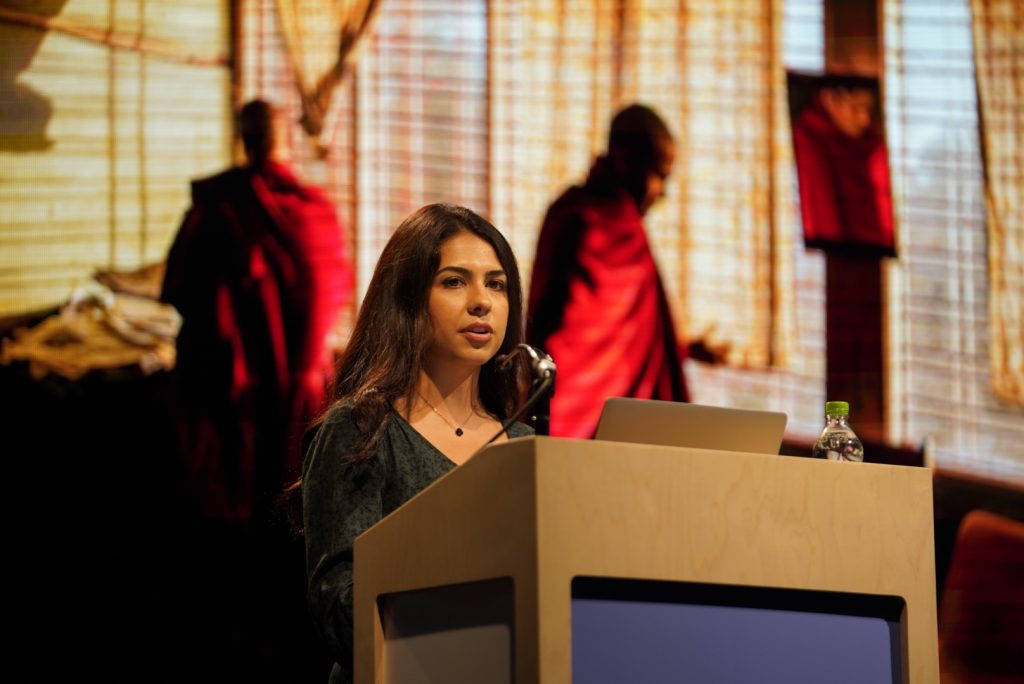
The Magnum photographer shared the story of how her mother moved to the US from Russia, with her brother and herself, and began a new life in California when Diana was just seven. She spoke about the sacrifices involved in becoming American for her family, reconnecting with her biological father in Moscow 15 years later, trying to re-establish a relationship with him, and how these events shaped her life.
Throughout the years, photography became the medium through which Diana was able to make sense of her family’s journey, from projects like Inventing My Father, to Mornings, to Santa Barbara which she is still working on. “I came into photography by chance. A professor at university taught me photography gave you the ability to dissapear and just take images of the world. I wanted to see the world and try to find my place in it,” Diana said. “For the past year I’ve been living between California and everywhere, trying to recreate that first year when we arrived to the US. Trying to reconstruct my very first memories of America.”
ZUZANNA ZIOMECKA
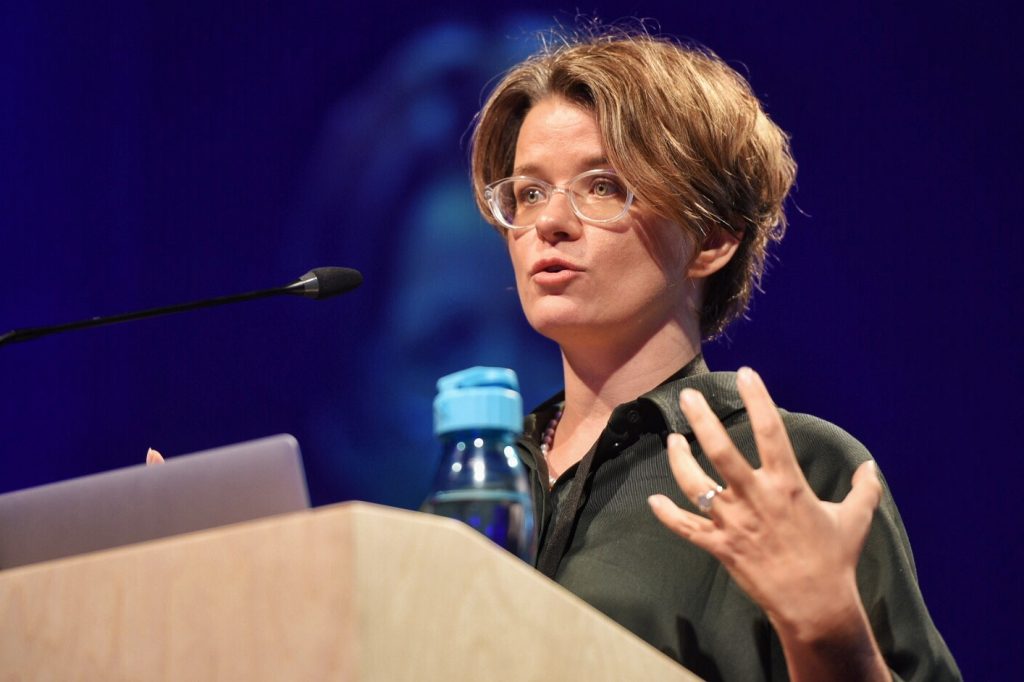
Zuzanna Ziomecka, editor and founder of NewsMavens, opened the afternoon session with a talk on perspectives and biases and how they are reflected in the media narrative.
- There are 11 millions of bits of information that we are ingesting unconsciously all the time and only 7+/-2 make it to the conscious mind, which means there is a lot of compression and selection.
There are two ways our brain filters the information. One of them is our attention – what we pay attention to, we can see; what we don’t pay attention to, disappears. The second way is via automatic processes, which are called biases and these days have negative connotations. - Biases help our brains determine what we notice and what we don’t. We all have 183 general, known biases, but every one of us has personal biases, which we get from our families. Imagine how these biases affect the news.
- Some of the biases we see reflected in the media: negativity bias (if it bleeds, it leads); memory bias (if things are bizarre, people will remember); and the in-group bias, the tendency to give preferential treatment to people who are similar to us.
- Even though there are a lot of excellent women journalist reporters, only 27% of them are running newsrooms. There’s usually a man who decides what news gets promoted, what are the relevant stories. And because of the natural biases that we are all equipped with, men are conditioned to notice different things, because studies show we raise girls to notice different things than boys.
- We founded NewsMavens to answer the question of what happens when only women chose the news. After a year, we discovered that women pay more attention to women and to other marginalized groups. Also, mainstream media tends to look at the power structures more – at big politicians, the big economy, people who make decisions about the future and the present. Women showed via NewsMavens that they had a tendency to focus on the results of those top decisions upon lower aspects. Men pay attention to cause, women tend to pay attention to effect. If we want to tell stories fully, we need to pay attention to both.
- Diversity is this amazing opportunity for journalists to start being curious about discovering the truth about the big picture together.
ANNA ROSLING
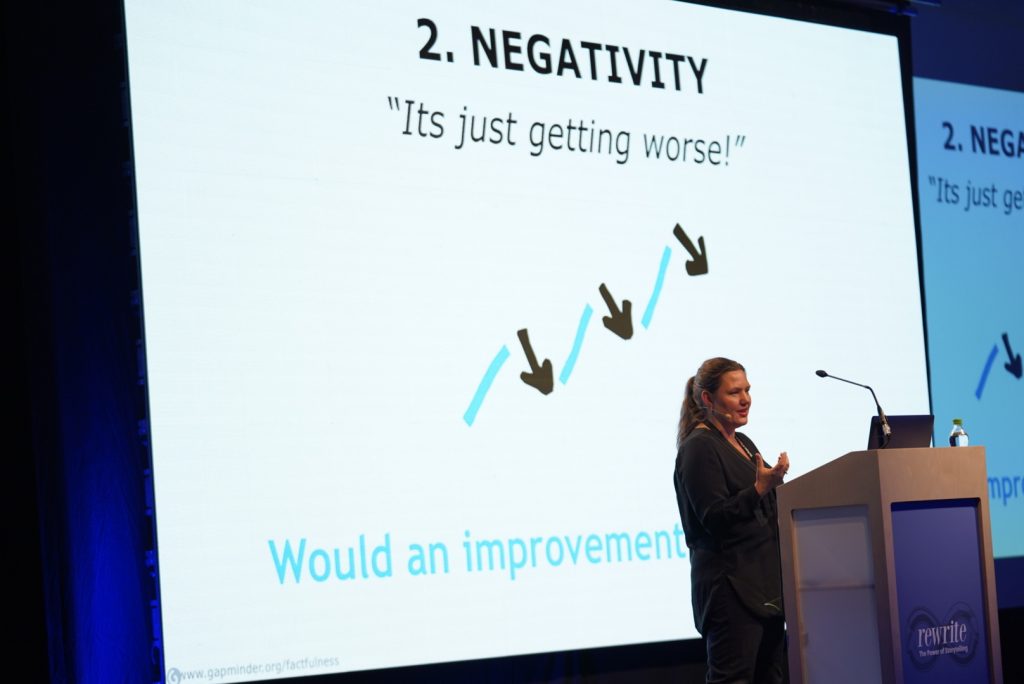
Anna Rosling Rönnlund, creator of Dollar Street, co-author of the bestseller Factfulness, thought she was going to be an artist who would create art that’s hard to grasp. Instead, she became a data visualization guru who explains the world through information that’s easy to absorb. Here is what we learned from her:
- We need to be fact-based about the world so that we know global trends and what we should be doing.
- There are three mega-misconceptions about the world: that it’s divided into two categories, that it’s getting worse and that the world popularion JUST increases. The population IS increasing, but the UN estimates this won’t continue forever.
- We made an animated bubble chart, income distribution mountains, documentaries, films, TED Talks, and we ended up feeling unsatisfied. We realized we forgot to give people of a fact-based world view, we were just giving people snippets of information like everyone else.
- Educated people tend to overestimate what they know and how negative things are. We need to be humble and curious to get the world right.
- We gathered 32 things that have actually improved over time: legal slavery was significantly reduced, people are unlikely to die in natural disasters, fewer children are dying, fewer planes are crashing and so on.
- What we see on TV are the extraordinary events, as it should be, but it’s a bad way of forming a worldview.
- Cultural stereotypes fall apart when we start looking at people’s income. It’s more relevant than national averages.
- A few rules of thumb to gain better knowledge of the world: compare to make sense of numbers; we tend to think things aren’t moving, but we don’t notice the changes; look at situations using different tools and ideologies; fight the urgency instinct (we feel that we have to do something drastic right now, but most often we can take one step at the time).
BRIAN REED
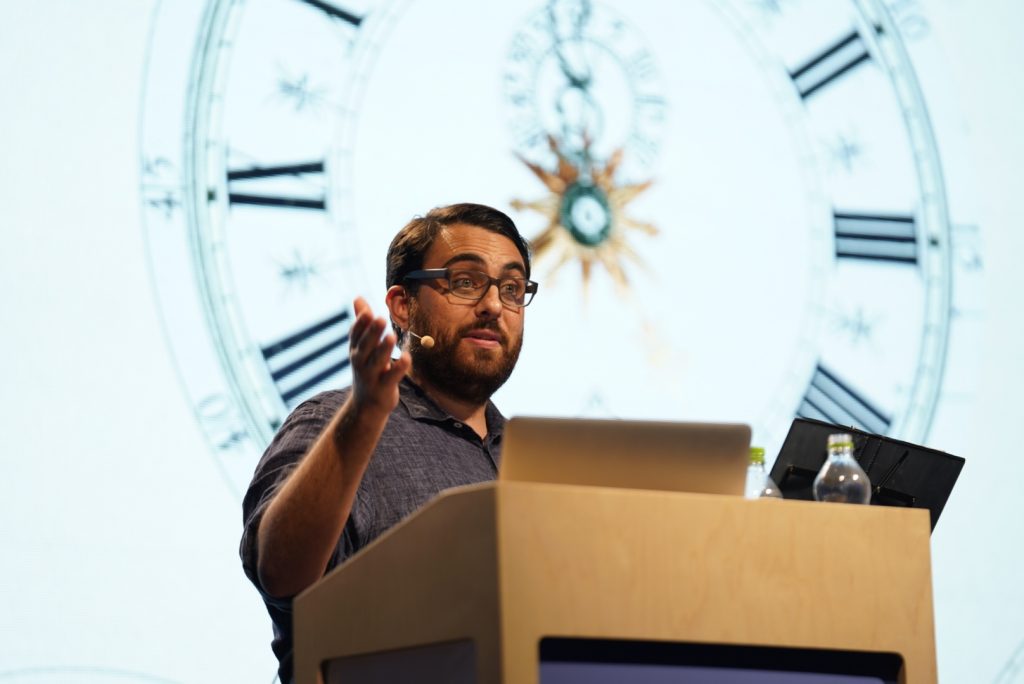
Brian Reed, host and co-creator of the groundbreaking podcast S-Town, closed #Story18 by walking the audience through the process of how he and his team at Serial and This American Life developed an entirely new kind of storytelling:
- Podcasting is still so new, which is exciting and freeing, but also scary because you’re not sure if you’re making the right decisions.
- While we were making the show we felt we weren’t just telling a story, but trying to invent a new genre. (…) Only by trying and failing many times a story like S-Town can emerge.
- I felt disappointed in the world for not making John McLemore feel like he belonged in it. Doing this story was my way of trying to rectify that and to extend John’s presence in the world.
- People talked about how it sounded different than other podcasts, how it felt like a new genre. This was what we explicitly set out to do, together with Julie Snyder, who created Serial with Sarah Koenig, which they modeled after TV shows. For S-Town, Julie and I looked to novels as a storytelling model. The idea came organically from the story and the reporting. John was someone who turned to fiction as a way of making sense of life and his place in it. I do the same, I use fiction to help me understand reality, to see things more sharply or more empathetically or with more humor. So we tried to see if we could make a journalistically podcast that felt like reading your favorite novels, an audio nonfiction novel.
- Junot Diaz talked about how every writer’s goal is to make a story that feels universal, that speaks to the human condition. For many students, that urge tended to leave them to write broad and unspecific, but Junot Diaz said in order to be universal, you have to do the opposite, to imagine a specific audience that you’re writing to. There are two possible outcomes, he said: if the reader is part of that small audience, he will feel like he received a love note; if he’s not part of it, he will feel like he intercepted a love note, and both are great outcomes.
- The more thoroughly you report and you discover specific details, the richer and more universal your story will be. I tried to think like a fiction writer while reporting, by knowing as much of the story as possible.
- When people think of reporting or nonfiction stories, their reaction is that truth is a limiting obstacle, but I think it’s the opposite. Being able to extract details out of the world is comforting. But you have to put a lot of time and sweat into it, to extract those details. (…) Reporting isn’t a glamorous job, it’s hours of interviews, tons of downtime, of exploring the dark corners of the internet, of waiting for people to be available.
- To me, S-Town had an impact similar to the impact of fiction. It sharpened or expanded or softened the way we look at the world.
Photos by Cătălin Georgescu and Vlad Cupșa.
